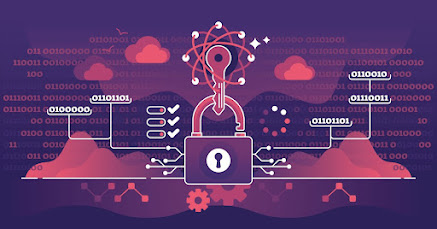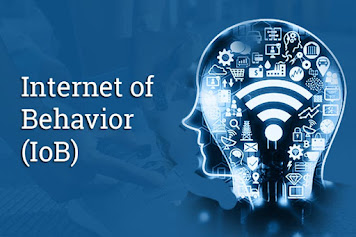Ethical hacking is an authorized practice of detecting vulnerabilities in an application, system, or organization’s infrastructure and bypassing system security to identify potential data breaches and threats in a network. Ethical hackers aim to investigate the system or network for weak points that malicious hackers can exploit or destroy. They can improve the security footprint to withstand attacks better or divert them.
The company that owns the system or network allows Cyber Security engineers to perform such activities in order to test the system’s defenses. Thus, unlike malicious hacking, this process is planned, approved, and more importantly, legal.
Ethical hackers aim to investigate the system or network for weak points that malicious hackers can exploit or destroy. They collect and analyze the information to figure out ways to strengthen the security of the system/network/applications. By doing so, they can improve the security footprint so that it can better withstand attacks or divert them.
Ethical hackers are hired by organizations to look into the vulnerabilities of their systems and networks and develop solutions to prevent data breaches. Consider it a high-tech permutation of the old saying “It takes a thief to catch a thief.”
They check for key vulnerabilities include but are not limited to:
- Injection attacks
- Changes in security settings
- Exposure of sensitive data
- Breach in authentication protocols
- Components used in the system or network that may be used as access points
Ethical hackers' code of ethics
Ethical hackers follow a strict code of ethics to make sure their actions help rather than harm companies. Many organizations that train or certify ethical hackers, such as the International Council of E-Commerce Consultants (EC Council), publish their own formal written code of ethics. While stated ethics can vary among hackers or organizations, the general guidelines are:
- Ethical hackers get permission from the companies they hack: Ethical hackers are employed by or partnered with the organizations they hack. They work with companies to define a scope for their activities including hacking timelines, methods used and systems and assets tested.
- Ethical hackers don't cause any harm: Ethical hackers don't do any actual damage to the systems they hack, nor do they steal any sensitive data they find. When white hats hack a network, they're only doing it to demonstrate what real cybercriminals might do.
- Ethical hackers keep their findings confidential: Ethical hackers share the information they gather on vulnerabilities and security systems with the company—and only the company. They also assist the company in using these findings to improve network defenses.
- Ethical hackers work within the confines of the law: Ethical hackers use only legal methods to assess information security. They don't associate with black hats or participate in malicious hacks.
What are the key concepts of ethical hacking?
Hacking experts follow four key protocol concepts.
- Stay legal. Obtain proper approval before accessing and performing a security assessment.
- Define the scope. Determine the scope of the assessment so that the ethical hacker’s work remains legal and within the organization’s approved boundaries.
- Disclose the findings. Notify the organization of all vulnerabilities discovered during the assessment, and provide remediation advice for resolving these vulnerabilities.
- Respect data sensitivity. Depending on the data sensitivity, ethical hackers may have to agree to a nondisclosure agreement, in addition to other terms and conditions required by the assessed organization.
Ethical hacking skills and certificates
Ethical hacking is a legitimate career path. Most ethical hackers have a bachelor's degree in computer science, information security, or a related field. They tend to know common programming and scripting languages like python and SQL.
They’re skilled—and continue to build their skills—in the same hacking tools and methodologies as malicious hackers, including network scanning tools like Nmap, penetration testing platforms like Metasploit and specialized hacking operating systems like Kali Linux.
Like other cybersecurity professionals, ethical hackers typically earn credentials to demonstrate their skills and their commitment to ethics. Many take ethical hacking courses or enroll in certification programs specific to the field. Some of the most common ethical hacking certifications include:
- Certified Ethical Hacker (CEH): Offered by EC-Council, an international cybersecurity certification body, CEH is one of the most widely recognized ethical hacking certifications.
- CompTIA PenTest+: This certification focuses on penetration testing and vulnerability assessment.
- SANS GIAC Penetration Tester (GPEN): Like PenTest+, the SANS Institute's GPEN certification validates an ethical hacker's pen testing skills.
Roles and Responsibilities of an Ethical Hacker
Ethical Hackers must follow certain guidelines to perform hacking legally. A good hacker knows his or her responsibility and adheres to all of the ethical guidelines. Here are the most important rules of Ethical Hacking:
- An ethical hacker must seek authorization from the organization that owns the system. Hackers should obtain complete approval before performing any security assessment on the system or network.
- Determine the scope of their assessment and make known their plan to the organization.
- Report any security breaches and vulnerabilities found in the system or network.
- Keep their discoveries confidential. As their purpose is to secure the system or network, ethical hackers should agree to and respect their non-disclosure agreement.
- Erase all traces of the hack after checking the system for any vulnerability. It prevents malicious hackers from entering the system through the identified loopholes.
What are some limitations of ethical hacking?
- Scope. Ethical hackers cannot progress beyond a defined scope to make an attack successful. However, it’s not unreasonable to discuss out-of-scope attack potential with the organization.
- Resources. Malicious hackers don’t have time constraints that ethical hackers often face. Computing power and budget are additional constraints of ethical hackers.
- Methods. Some organizations ask experts to avoid test cases that lead the servers to crash (e.g., denial-of-service attacks).



























